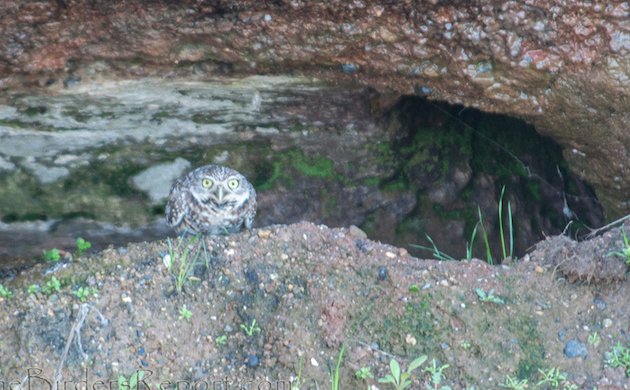
As I opined in my post back in 2010 (and continue to preach) the Western Burrowing Owl needs a conservation plan. Above is a photo of the only Burrowing Owl (Athene cunicularia) seen at Tuscan Preserve back in February of 2010 when a group of concerned birders installed eight artificial burrows on this property, to be preserved in perpetuity.
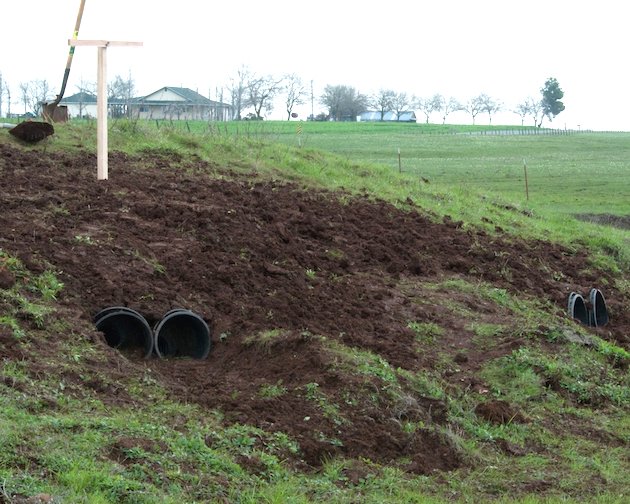
That original installation (pictured above) was part of a series of 40 artificial burrows created at three separate locations, all made possible by a grant from Audubon California. In the summer of 2015 our investment paid off. A pair of Burrowing Owls fledged six young! Imagine how excited I was when I heard the news! Taken in July last year, this is one of the few photographs I have of some of the youngsters.
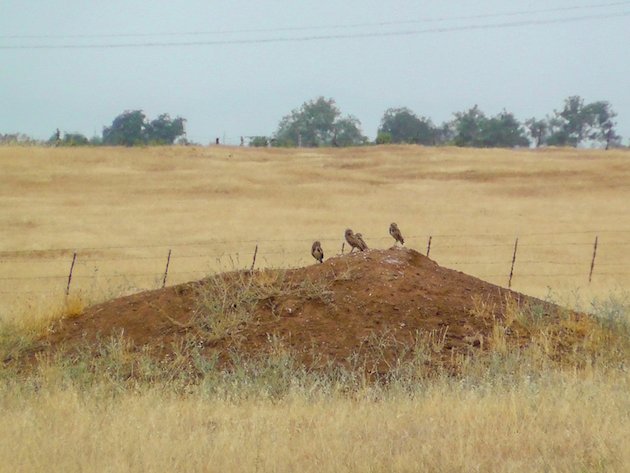
After five years of waiting and watching, we were so elated with this news of a successful breeding at the preserve that we applied for another grant from Audubon California. We got it! After all, the Western Burrowing Owl is listed as “Climate Endangered” by the Audubon Society.
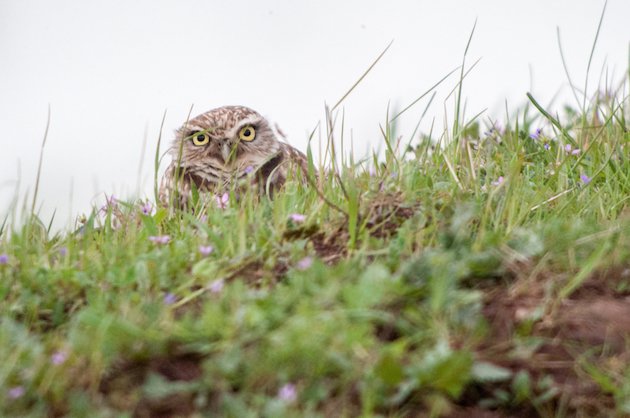
One of the reasons we are so excited about having a nesting pair of Burrowing Owls at the Tuscan Preserve is its location. This property is located in northern Butte County which is nearing the (dwindling) northern most historic range for this species in California.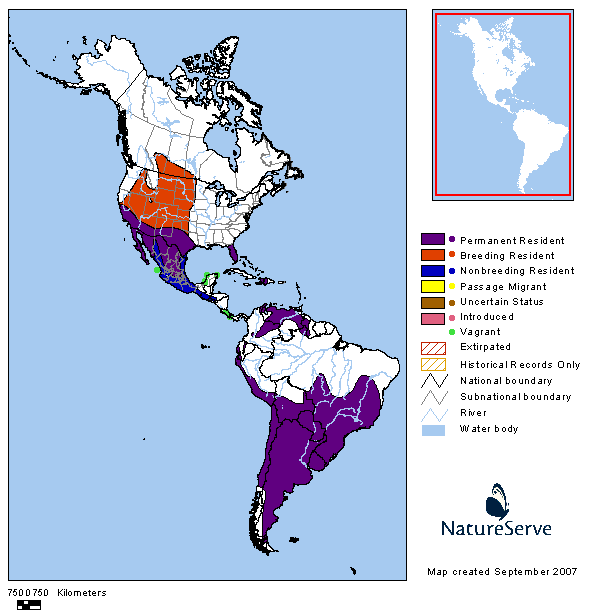
Studies have shown that Burrowing Owls tend to select a nest burrow from an area with a high density of burrows1. It is also well known that Burrowing Owls have high nest site fidelity, especially if they have had successful nesting attempts. For these reasons alone, after this successful nesting, we wanted to expand the number of artificial burrows available to the owls for the 2016 nesting season. Another study by Sandra Menzel showed that “of the owls that dispersed from their natal burrow, 52% were re-sighted nesting in a burrow less than 1 km from their natal burrow for their first nesting attempt2.”
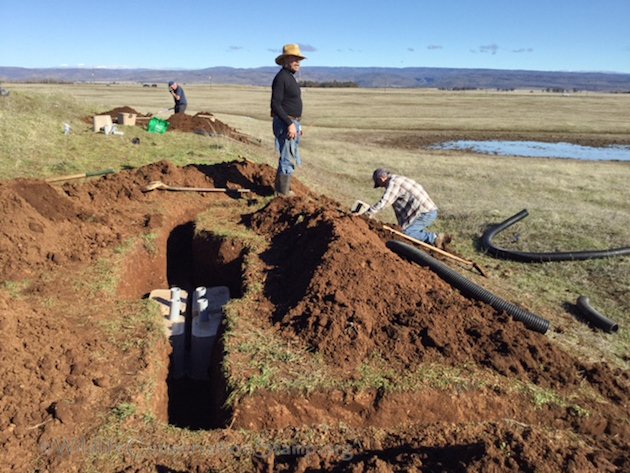
Each artificial burrow consists of a nest chamber (here we used water valve cover boxes) and a ten foot length of 4 inch perforated flexible drain pipe as the tunnel entrance to the nest chamber. Four nest chambers are situated together in a cluster to minimize the amount of excavation required.
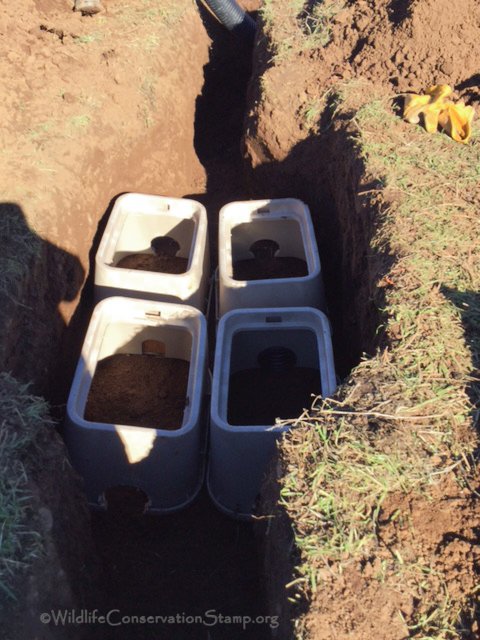
For this installation we fitted the nesting chambers with inspection tubes to be able to directly observe any nesting activity in occupied chambers. Two of the boxes are connected with a short piece of the 4 inch pipe so that they may be used as an escape route from predators. The owl can enter the tunnel at one end and escape through the other end if necessary. The other two tunnels dead end inside the nesting chamber.
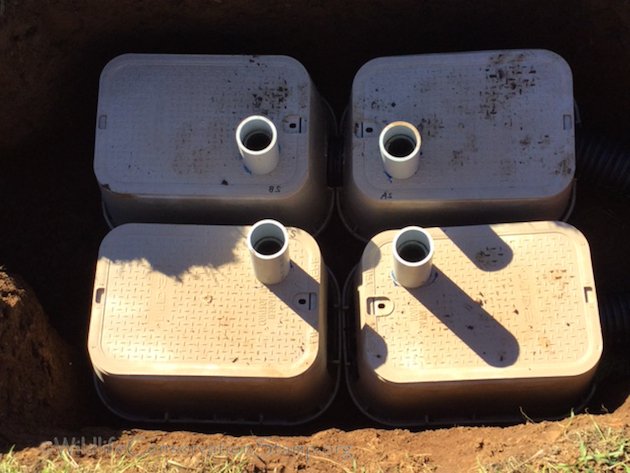
The inspection tubes are attached to the lids and reach to the soil surface, then the entire trench is backfilled. This property is also a site with vernal pools and uses cattle grazing for vegetation control. Since cows can destroy nest site entrances, eight inch square concrete blocks were used as foyers at the tunnel entrances. This is what the final product looks like showing the capped inspection tubes above and the concrete foyers on the slope of the berm, one cluster in the foreground and one in the distance.

During the install we observed four Burrowing Owls on this 56 acre property. Returning to the Tuscan Preserve within weeks of the installation I observed one owl at the entrance to one of the original burrows…
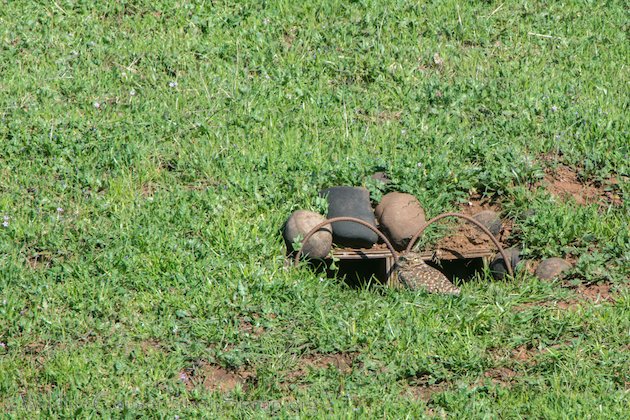
And one at the new installation you can see on the far right of this long distance photo.
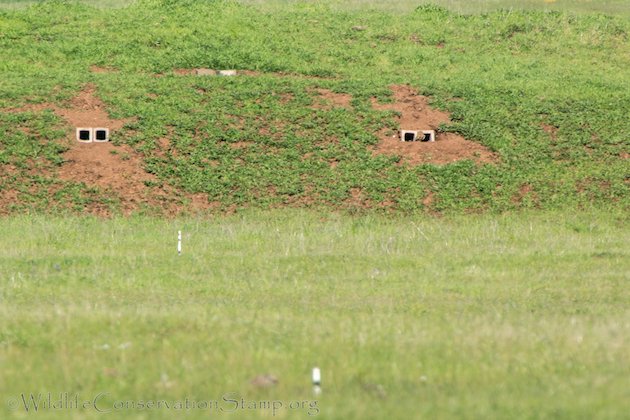
We hope to eventually establish a new colony of Burrowing Owls at the Tuscan Preserve in Butte County.
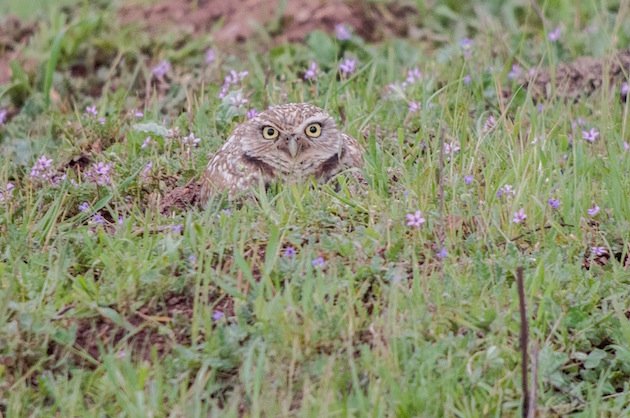
Things already seem to be looking up!

Here is a video I shot when we first discovered the new residents of Tuscan Preserve last July.
httpv://youtu.be/TG4HxJ0pIp0
References: 1Plumpton, D. L., and R. S. Lutz. 1993. Nesting habitat use by Burrowing Owls in Colorado. Journal of Raptor Research 27:175-179.,2Menzel, Sandra, “An Assessment of Artificial Burrows for Burrowing Owls in Northern California” (2014).Master’s Theses. Paper 4505.













Heartwarming. Congratulations on this success.
What a spectacular, and obviously successful story. Thank you so much for sharing!
Great work! I just got back from Broward County, FL, where my nephews showed me a new open space area full of artificial burrows, many of them occupied. The town and the local Audubon chapter sponsor them as school projects. Middle school students build the artificial burrows and create signs. I think some of the owls were relocated from other areas, like the airport. I wonder if there are differences in the nesting requirements of western and eastern Burrowing Owls?
Thank you very much Peter!
It was very much my pleasure to share this story Thomas. The Burrowing Owl is such a charismatic species I hope everyone will be able to observe them at some point in their lives.
Thanks Donna! They have a great program there in Broward County! South Florida Audubon Society also supports our Wildlife Conservation Stamp 😉 I really need to contact them on the relocation aspect of Burrowing Owl conservation efforts. California doesn’t allow translocation of owls at this time but I should talk to them regarding how successful that aspect of their program is. My guess is that it is highly successful and should be instituted in California.
As for the nesting requirements they are pretty universal for all species of Burrowing Owls. An advantage the owls have in Florida is that they are sometimes able to dig their own burrows in sandy soils, unlike the harder more compact soils here in California where the birds need fossorial mammals to dig their burrows for them.